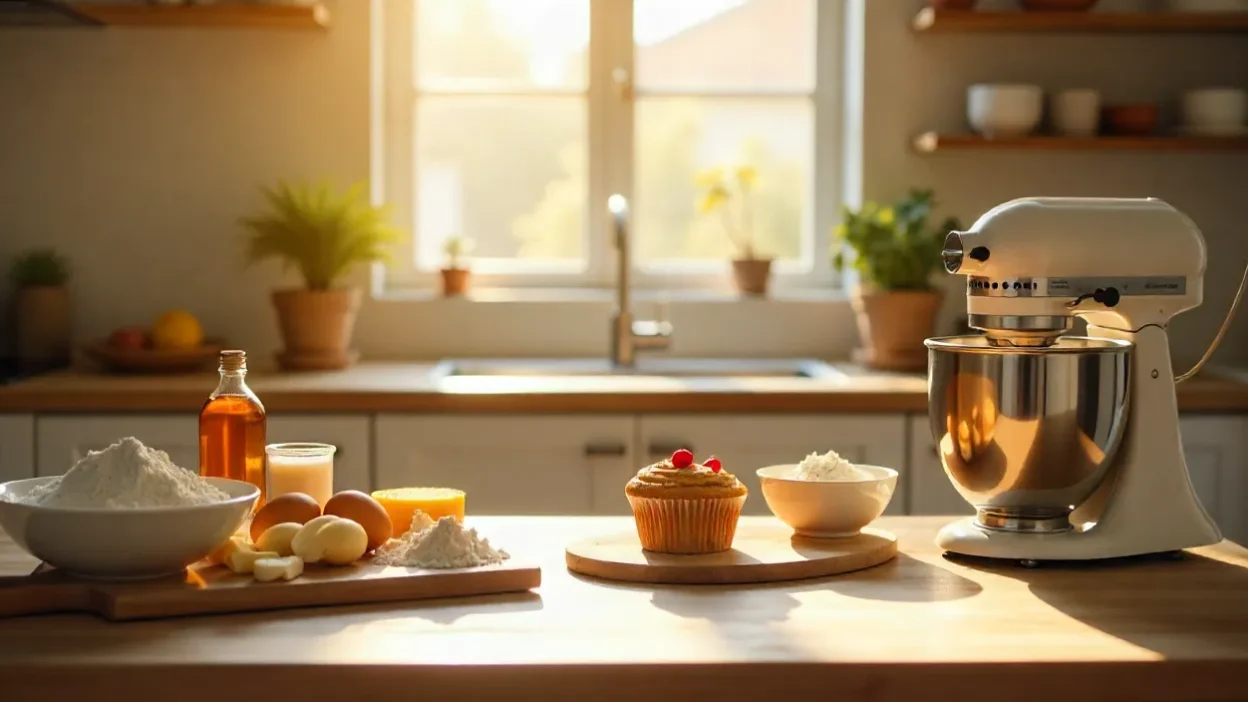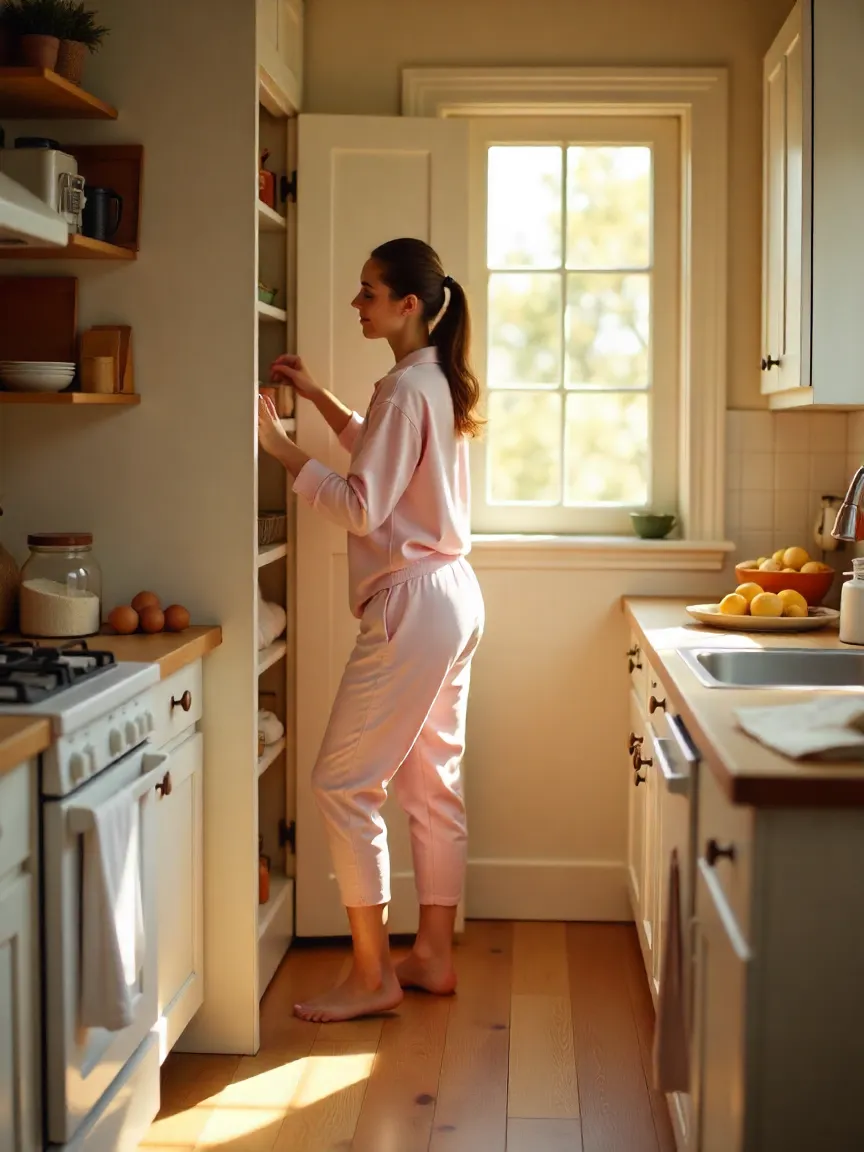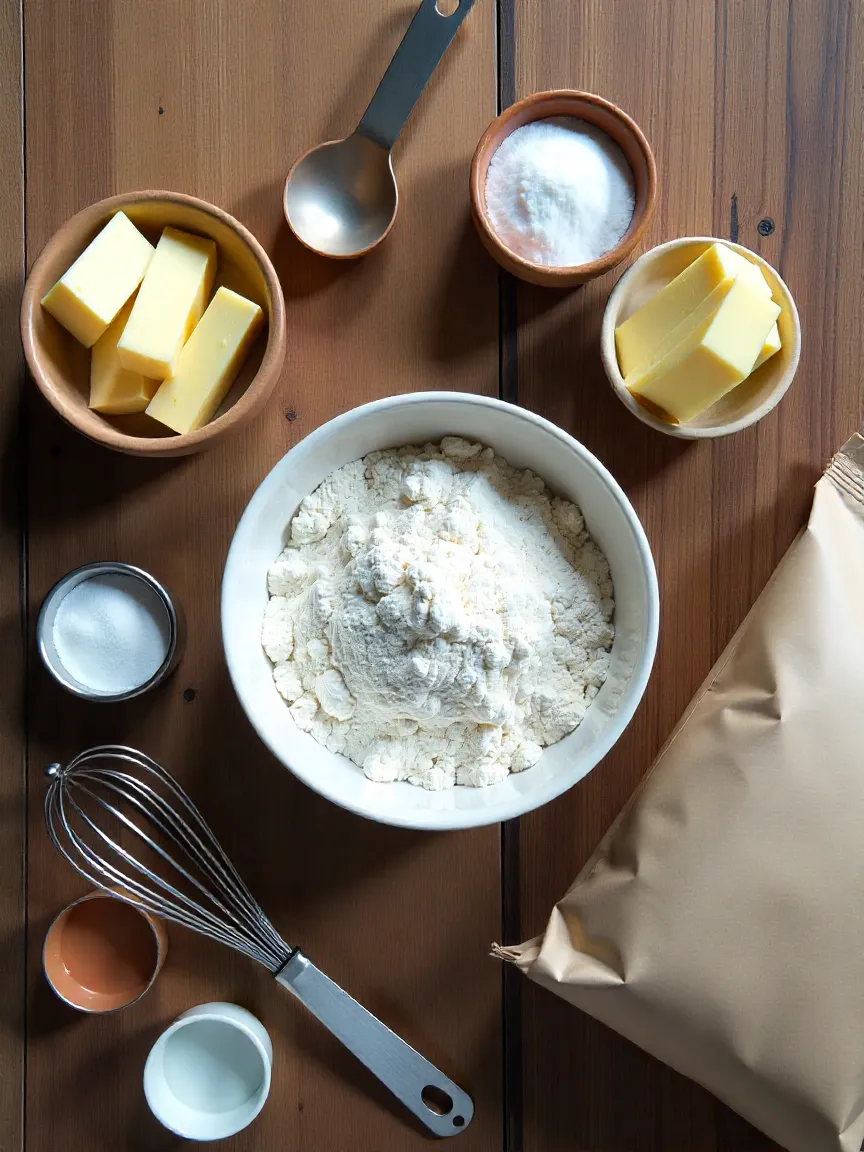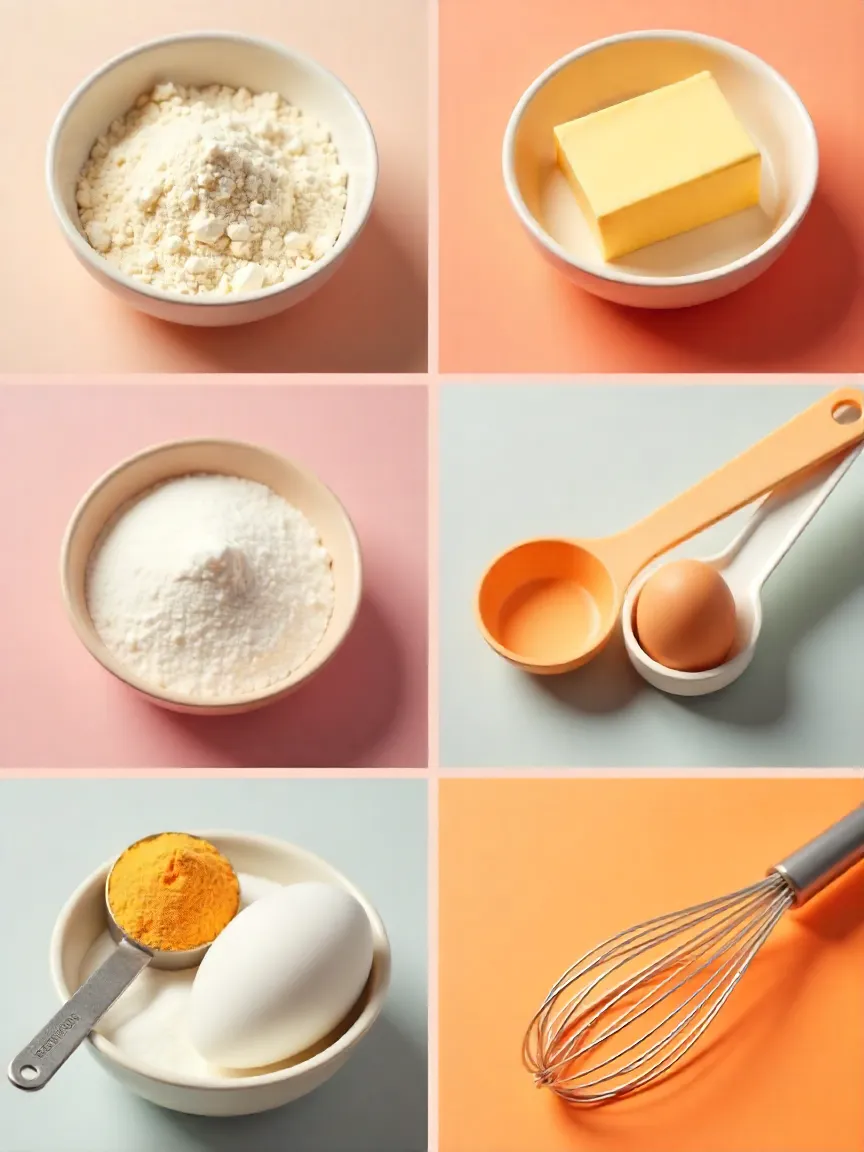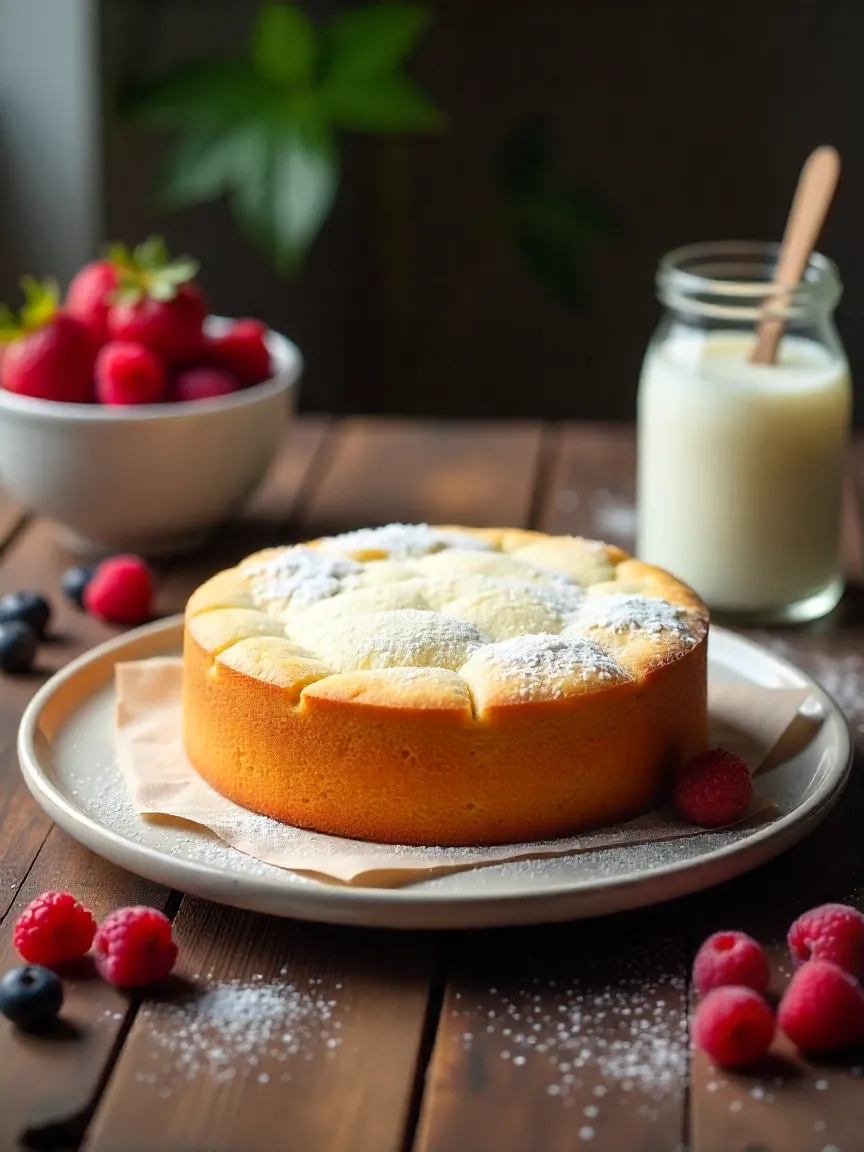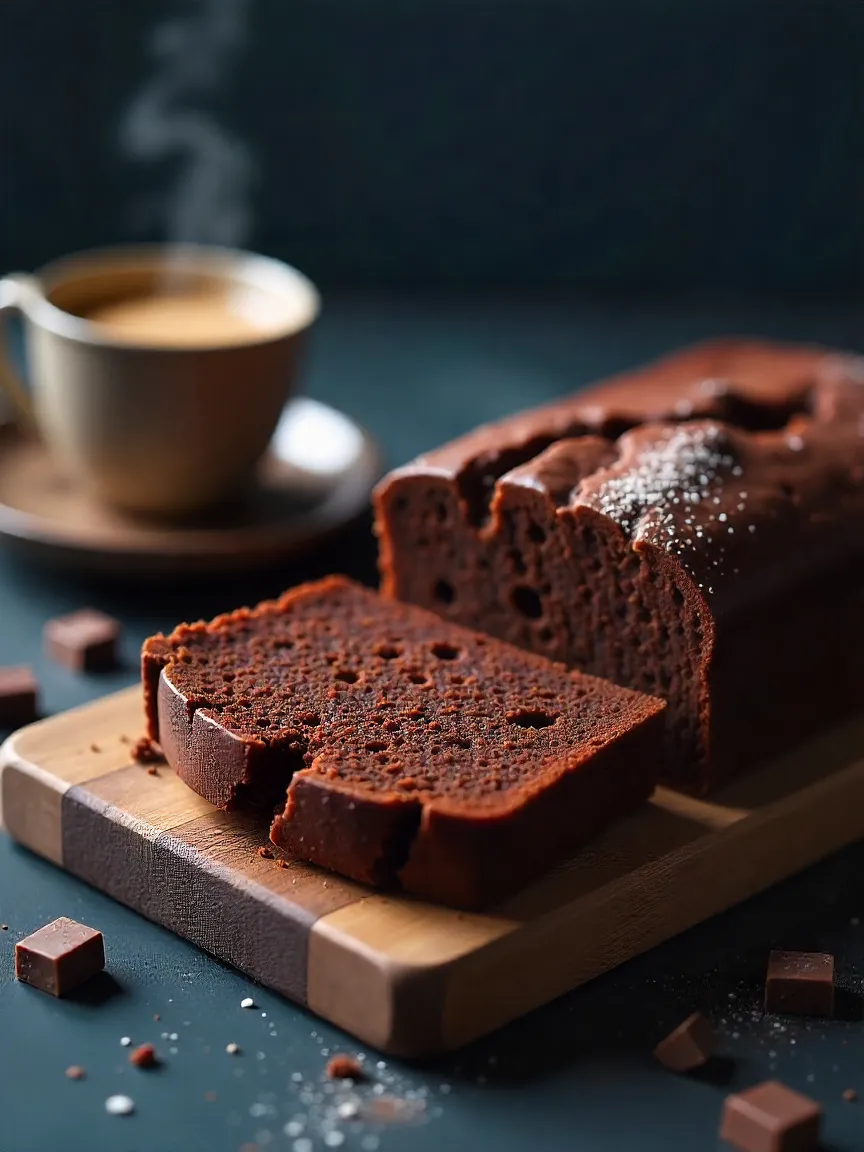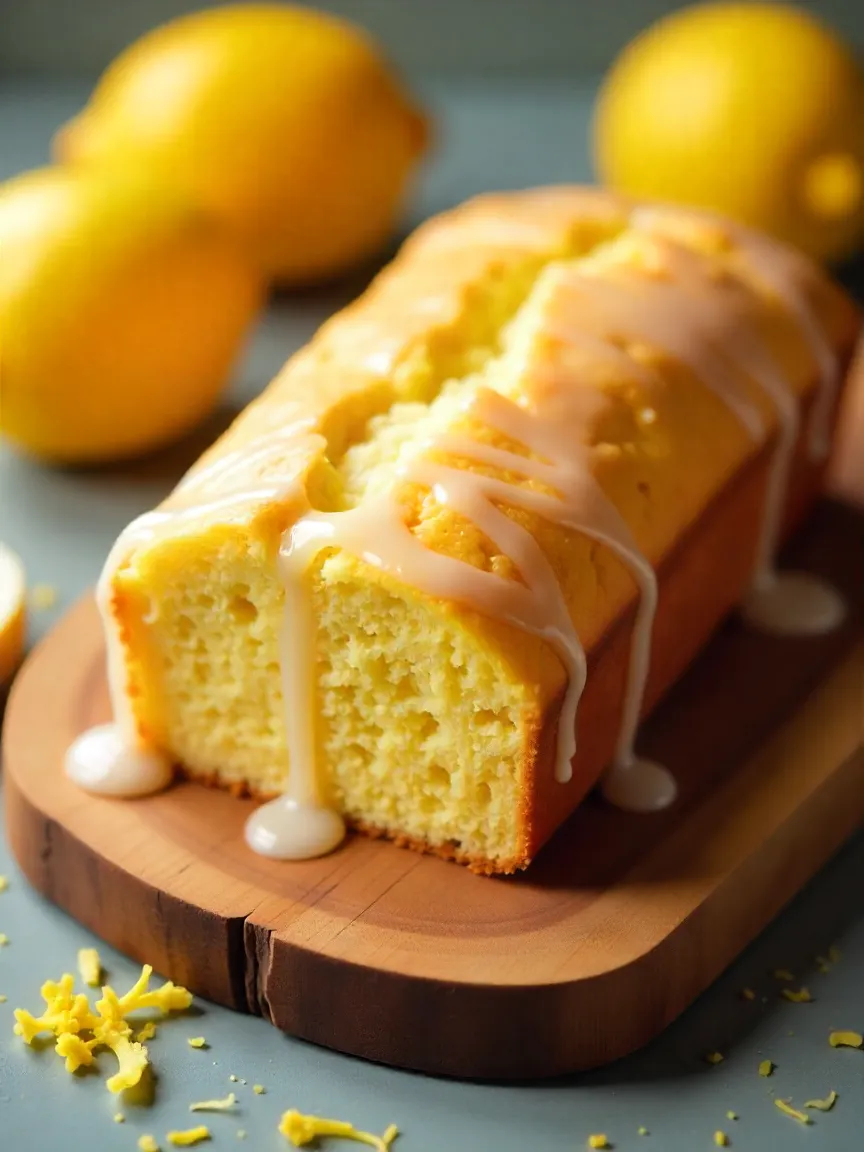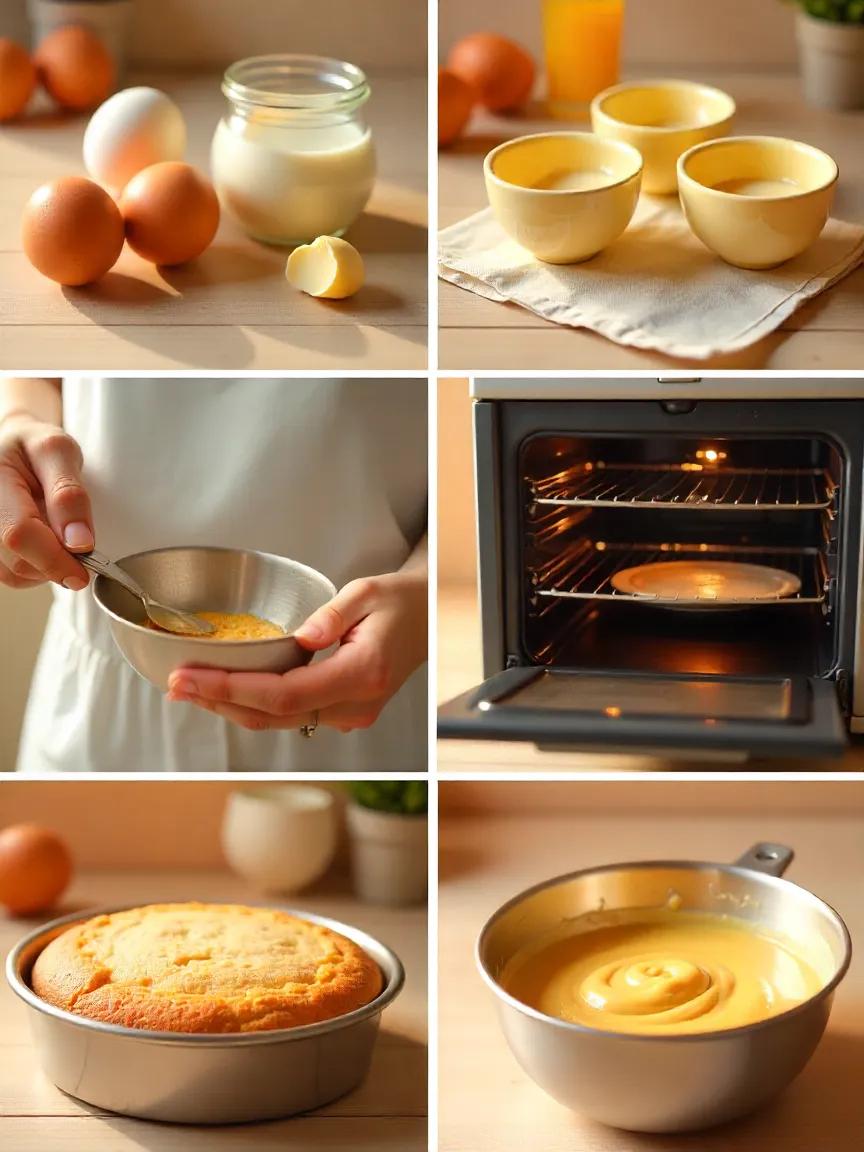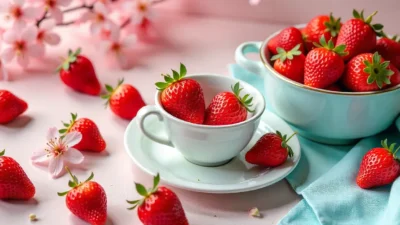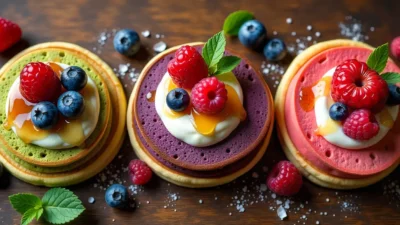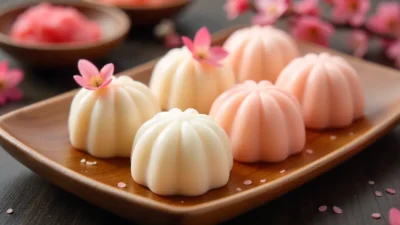Contents
Let’s get one thing straight: you’re not here for shortcuts. You’re not trying to “just add water” to a suspicious packet with neon sprinkles or follow a TikTok where someone bakes cake in a mug with three Oreos and hope. Nah — you want to bake a cake from scratch. The kind that fills the house with warm, buttery smells and makes your kitchen feel like a cozy little bakery. The kind that’s slightly messy, maybe a little wonky on top, but made with actual care — and real ingredients. 🍰
You step into your kitchen, maybe still in your pajamas, and start investigating your pantry. Flour? Check. Sugar? Got it. Eggs? Probably. A stick of butter that’s been sitting in the fridge since Monday? Still good. And look at that — a nearly-forgotten bottle of vanilla extract from your one ambitious December baking project. Nice. You’re better prepared than you thought. 🥚🧈✨
Then it hits you. That classic moment of uncertainty.
You pause. You stare at the ingredients. You glance at your oven like it might offer moral support.
“Okay, but… what now?”
And if that sounds familiar — you’re not alone. You’re exactly where thousands of first-time bakers have stood before. Welcome to the club. 👋
This isn’t some intimidating recipe blog full of precise measurements, expensive stand mixers, or staged photos with linen napkins and perfect lighting. This is a relaxed, sleeves-rolled-up, “it’s totally fine if there’s flour in your hair” kind of guide. It’s about making something sweet and satisfying — and enjoying the process as much as the outcome. Whether it’s your first cake or your fiftieth, we’re doing this together. And guess what? You’ve got this. 💪🧁
🧂 What really goes into a cake? (besides love and chaos)
Let’s keep it real: baking a cake might look like some sort of magical culinary ritual — but deep down, it’s just about combining a few very basic ingredients in the right way.
Flour. Fat. Sugar. Eggs. A little chemical reaction magic.
That’s it. That’s cake. ✨
The key isn’t owning fancy tools or using rare ingredients flown in from Paris. It’s understanding what each simple component does and how they come together to create something so much greater than the sum of their parts. Once you know the “why” behind each ingredient, you’ll stop guessing and start feeling confident in what you’re doing.
🥖 Flour = the framework
Think of flour like the bones of your cake. It holds everything together.
All-purpose flour is fine for most cakes, unless you want something extra soft — then look for cake flour (or make your own: swap out 2 tablespoons per cup with cornstarch).
Avoid bread flour. Seriously. It’s meant for chewy things. You don’t want a chewy cake. Trust me.
🧈 Fat + sugar = the good stuff
Here’s where the fun begins. Butter, oil, sugar — they’re not just in there to taste good (though they definitely do that). They play a huge role in how your cake feels.
Let’s start with butter: it adds that rich, creamy flavor and, when creamed with sugar, traps tiny air bubbles that help give your cake lift. This process — the “creaming method” — is one of the unsung heroes of baking. Those air pockets? They become fluffy texture later.
Then there’s oil — it doesn’t do the air-trapping thing like butter does, but it makes cakes unbelievably moist. The kind that stays tender for days without drying out. A lot of chocolate or carrot cakes use oil for this reason.
And don’t underestimate sugar. It’s not just about sweetness. Sugar affects color, softness, and moisture retention. White granulated sugar is the go-to, but brown sugar brings more than just sweetness — it adds depth and a little hit of molasses flavor. Want the best of both worlds? Use a mix of the two. 👌
🔬 Leavening: the science of the rise
Okay, let’s talk about why your cake doesn’t come out looking like a pancake. That’s the job of leavening agents, and there are two main players: baking soda and baking powder.
Baking soda is like that friend who always needs a little push — it only works when it’s paired with something acidic, like lemon juice, yogurt, or buttermilk. No acid? No action.
Baking powder, on the other hand, is a bit more self-sufficient. It has both acid and base components built in, so it activates when mixed into your batter and again in the oven’s heat.
☝️ But here’s the thing — too much of either one, and your cake might puff up dramatically… only to sink into a sad crater. Too little, and it’ll be dense, gummy, and underwhelming. So yeah, measuring is not optional. Use a proper teaspoon and don’t eyeball it.
🍰 3 beginner-friendly cakes that actually turn out amazing
Let’s be real — when you’re craving cake, you don’t want a lecture. You want something warm, sweet, a little bit nostalgic, and easy enough to whip up in a regular kitchen without fancy gadgets or a culinary degree. Here are three foolproof, tried-and-true cakes you can bake even if your oven still scares you a little.
🎂 1. The classic vanilla cake (aka: your go-to forever cake)
This is the cake equivalent of your favorite hoodie — reliable, comforting, and always hits the spot. You can dress it up with berries, frosting, or jam… or just eat it plain with your hands at midnight. No judgment.
📝 Ingredients:
- 1 cup (230g) unsalted butter, softened
- 1¼ cups (250g) granulated sugar
- 3 large eggs
- 1 tablespoon vanilla extract
- 2 cups (250g) all-purpose or cake flour
- 2 teaspoons baking powder
- ½ teaspoon salt
- ¾ cup (180ml) milk (whole is best)
👩🍳 How to make it:
- Preheat your oven to 350°F (175°C). Grease a 9-inch round or square cake pan, or line it with parchment if you’re fancy.
- In a large bowl, beat the butter and sugar together until the mixture looks pale and fluffy — about 3–5 minutes.
- Add the eggs one at a time, mixing well after each. Stir in the vanilla.
- In a separate bowl, whisk together the flour, baking powder, and salt.
- Add the dry ingredients to the wet mixture in three parts, alternating with the milk. Start and end with the flour. Mix gently until just combined — don’t go wild.
- Pour the batter into the prepared pan and smooth the top.
- Bake for 28–32 minutes, or until a toothpick poked in the center comes out clean.
- Let it cool in the pan for 10 minutes, then transfer to a rack. Wait as long as you can… then dig in.
🍫 2. One-bowl chocolate cake (moist, fudgy, no mixer required)
This cake is dangerously easy — like, you’ll want to make it every weekend easy. It’s rich, chocolatey, soft for days, and tastes even better the next morning with coffee. No frosting needed, but we’re not here to stop you.
📝 Ingredients:
- 1¾ cups (220g) all-purpose flour
- ¾ cup (65g) unsweetened cocoa powder
- 2 cups (400g) sugar
- 1½ teaspoons baking powder
- 1½ teaspoons baking soda
- 1 teaspoon salt
- 2 large eggs
- 1 cup (240ml) milk
- ½ cup (120ml) vegetable oil
- 1 teaspoon vanilla extract
- 1 cup (240ml) hot water — yes, plain hot water!
👨🍳 Directions:
- Preheat the oven to 350°F (175°C). Grease two 9-inch round cake pans or one large rectangular one.
- In a big bowl, whisk together the flour, cocoa powder, sugar, baking powder, baking soda, and salt.
- Add in the eggs, milk, oil, and vanilla. Stir until mostly smooth — lumps are fine.
- Slowly pour in the hot water while stirring. The batter will be very thin, almost like chocolate soup. Don’t panic. That’s what makes it moist.
- Pour evenly into pans and bake for 30–35 minutes.
- Cool completely before removing from pans. Frost it, dust with powdered sugar, or just slice and enjoy straight up.
🍋 3. Zesty lemon drizzle loaf (fresh, bright & not too sweet)
When you want something lighter than chocolate but still satisfying, this lemon loaf delivers. It’s soft and tender, with a bright citrus kick and a sweet glaze that sinks into every bite.
📝 You’ll need:
- ½ cup (115g) unsalted butter, softened
- 1 cup (200g) sugar
- 2 large eggs
- Zest of 2 lemons + 2 tablespoons lemon juice
- 1½ cups (190g) all-purpose flour
- 1½ teaspoons baking powder
- Pinch of salt
- ⅓ cup (80ml) milk
- ¾ cup powdered sugar (for glaze) + more lemon juice
🍋 How to make it:
- Heat your oven to 350°F (175°C) and grease a standard loaf pan.
- Cream the butter and sugar together until light and fluffy.
- Add the eggs one at a time, then stir in lemon zest and juice.
- In another bowl, whisk together flour, baking powder, and salt.
- Gradually mix the dry ingredients into the wet. Stir in the milk last.
- Pour into the prepared pan and bake for 45–50 minutes, or until the top is golden and a skewer comes out clean.
- While it bakes, make the glaze by mixing lemon juice into the powdered sugar until it’s pourable.
- When the loaf is fresh from the oven, poke it all over with a toothpick and slowly pour the glaze on top so it soaks in.
- Let it cool. Slice. Taste summer.
⚠️ Stuff that trips people up (don’t be that person)
- Cold ingredients? Nope. Let eggs, milk, and butter come to room temp.
- Measuring with your eyes? Nope again. Use real measurements.
- Opening the oven every 5 minutes? Please don’t.
- Not greasing the pan? Cake will stick. You will cry.
- Overmixing? Cake turns rubbery. Mix just until combined.
🎉 Final words (before you head to the kitchen)
Here’s the thing. Your cake doesn’t need to be perfect. It might crack. It might be slightly lopsided. Maybe your frosting is more “abstract art” than smooth finish.
Doesn’t matter. You made it. With your own hands. And it’s going to taste like home.
So, deep breath. Put on that playlist. Preheat your oven. Bake something real.
Your cake story starts now.

